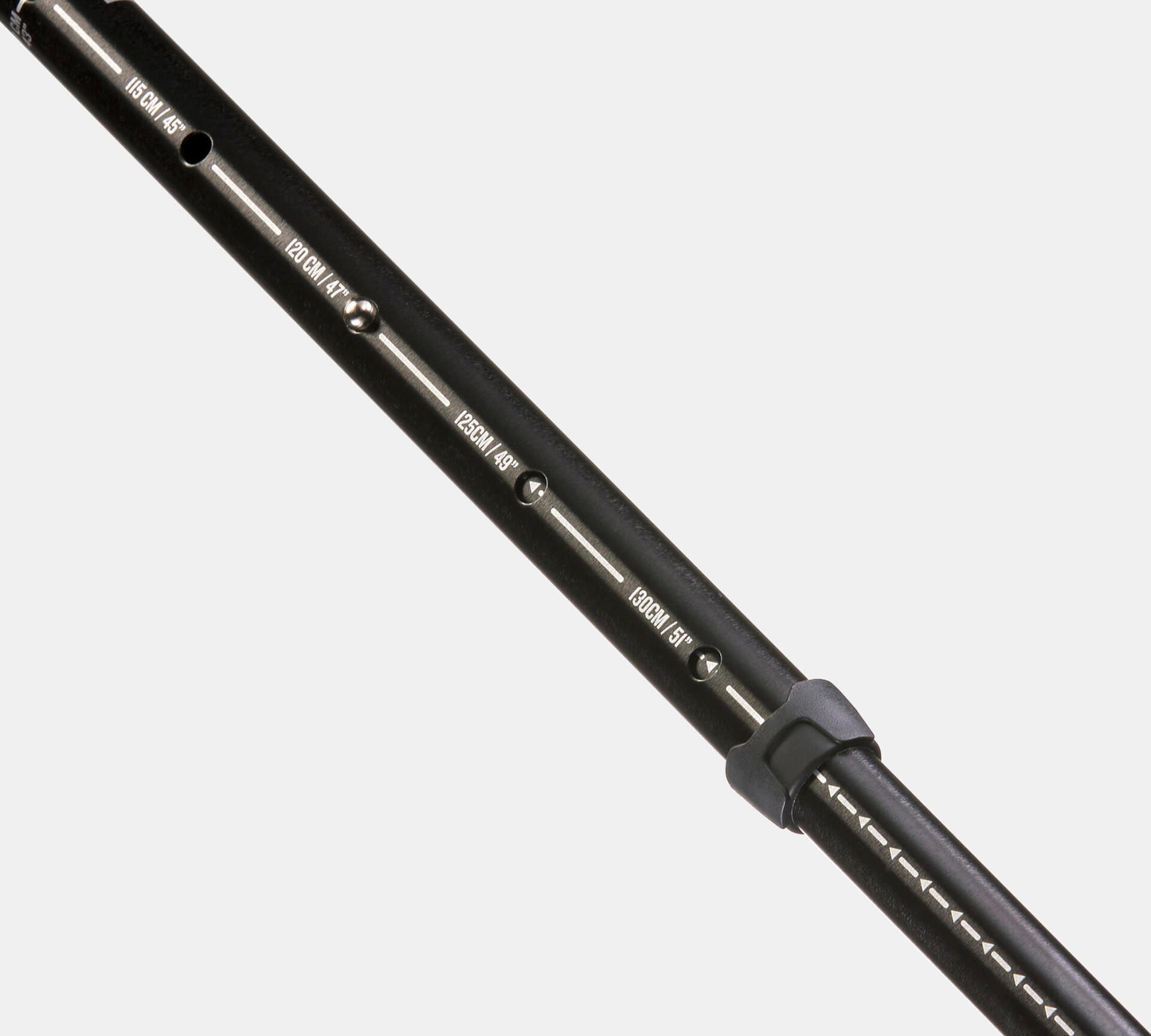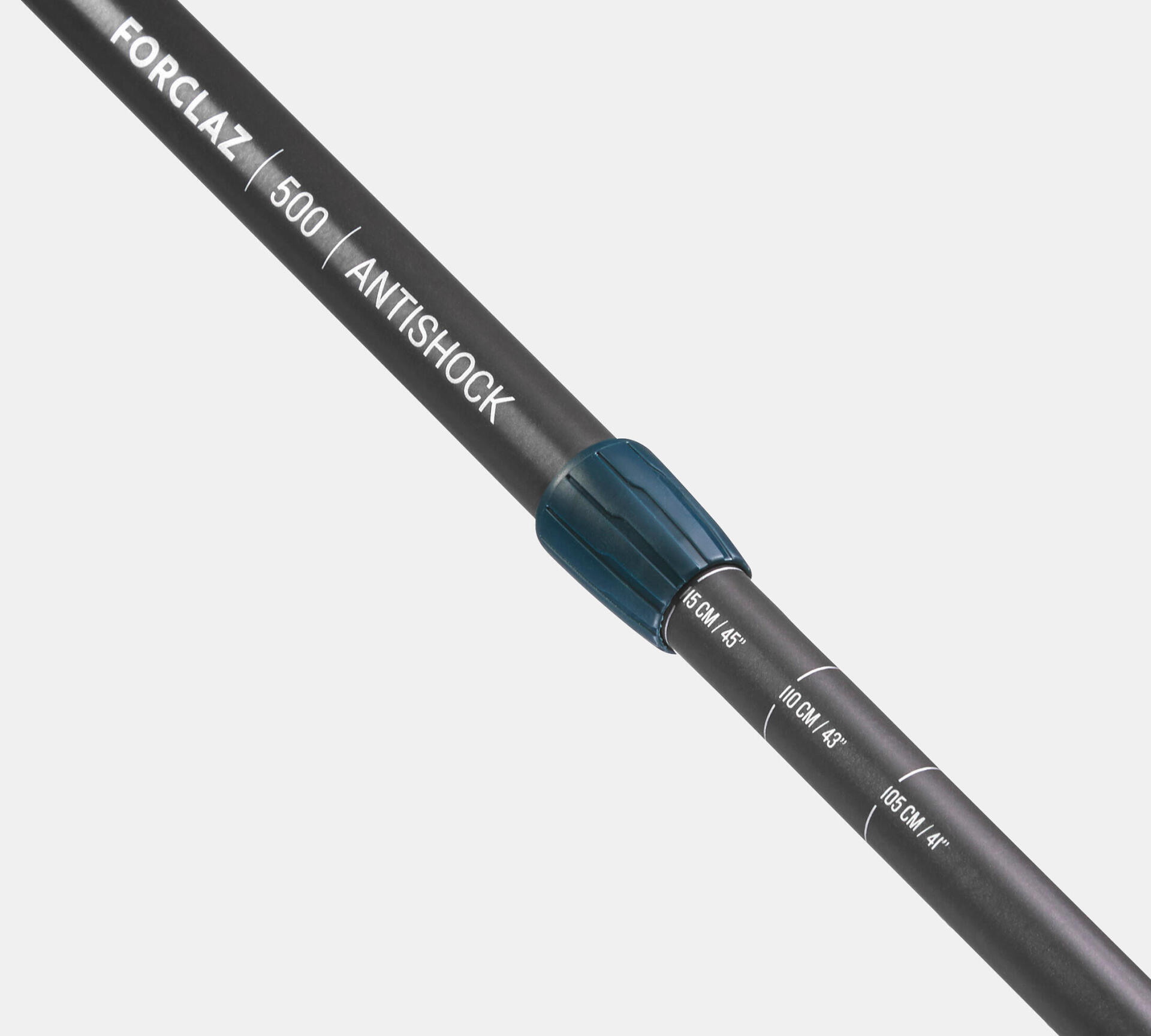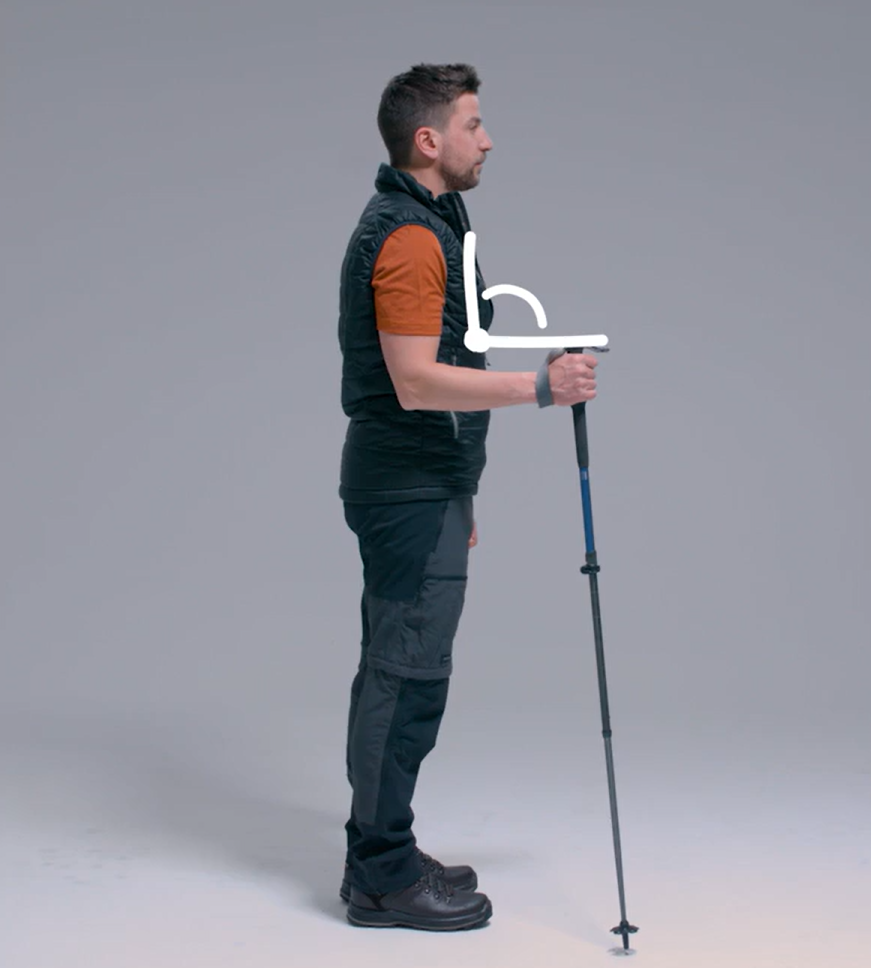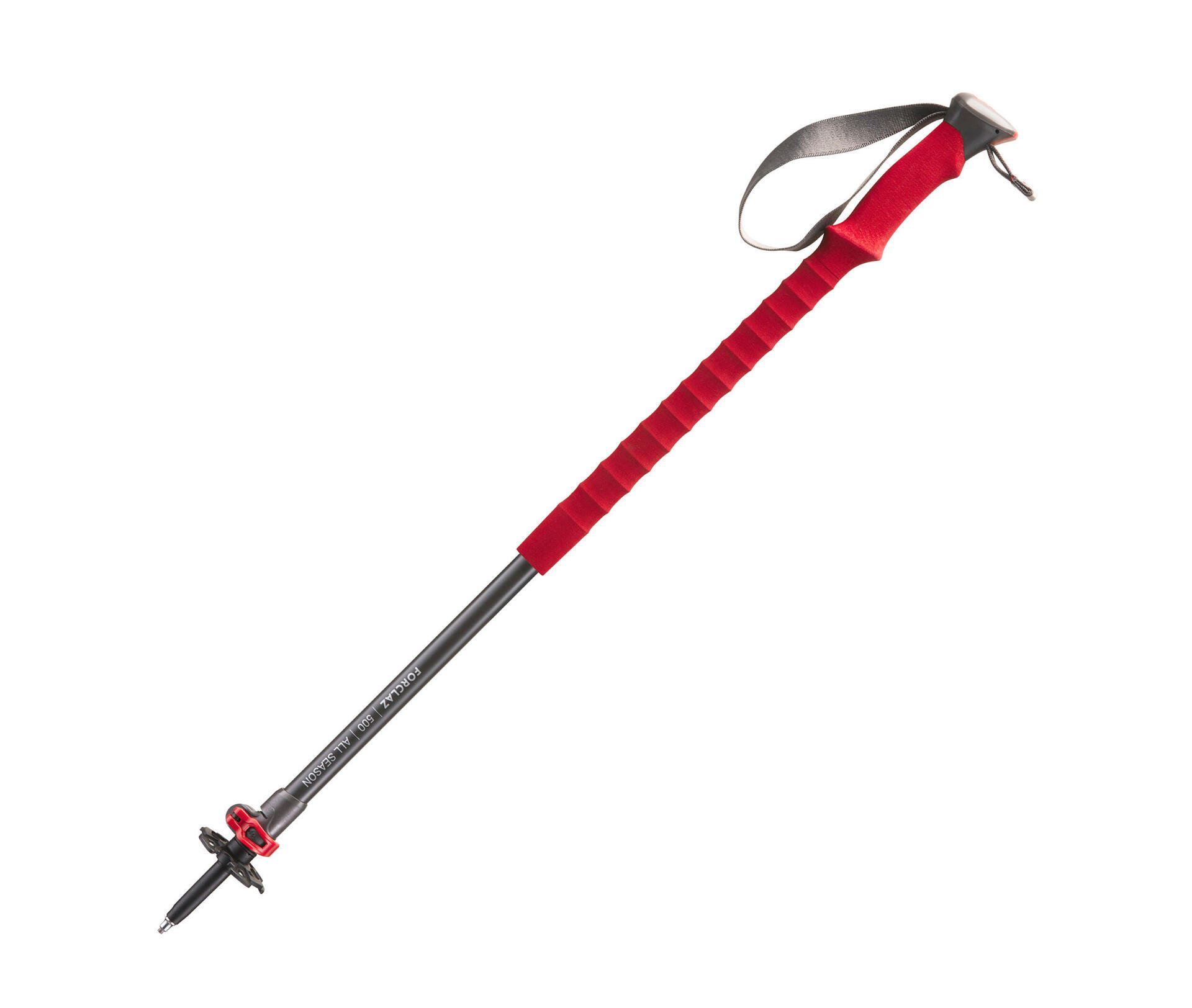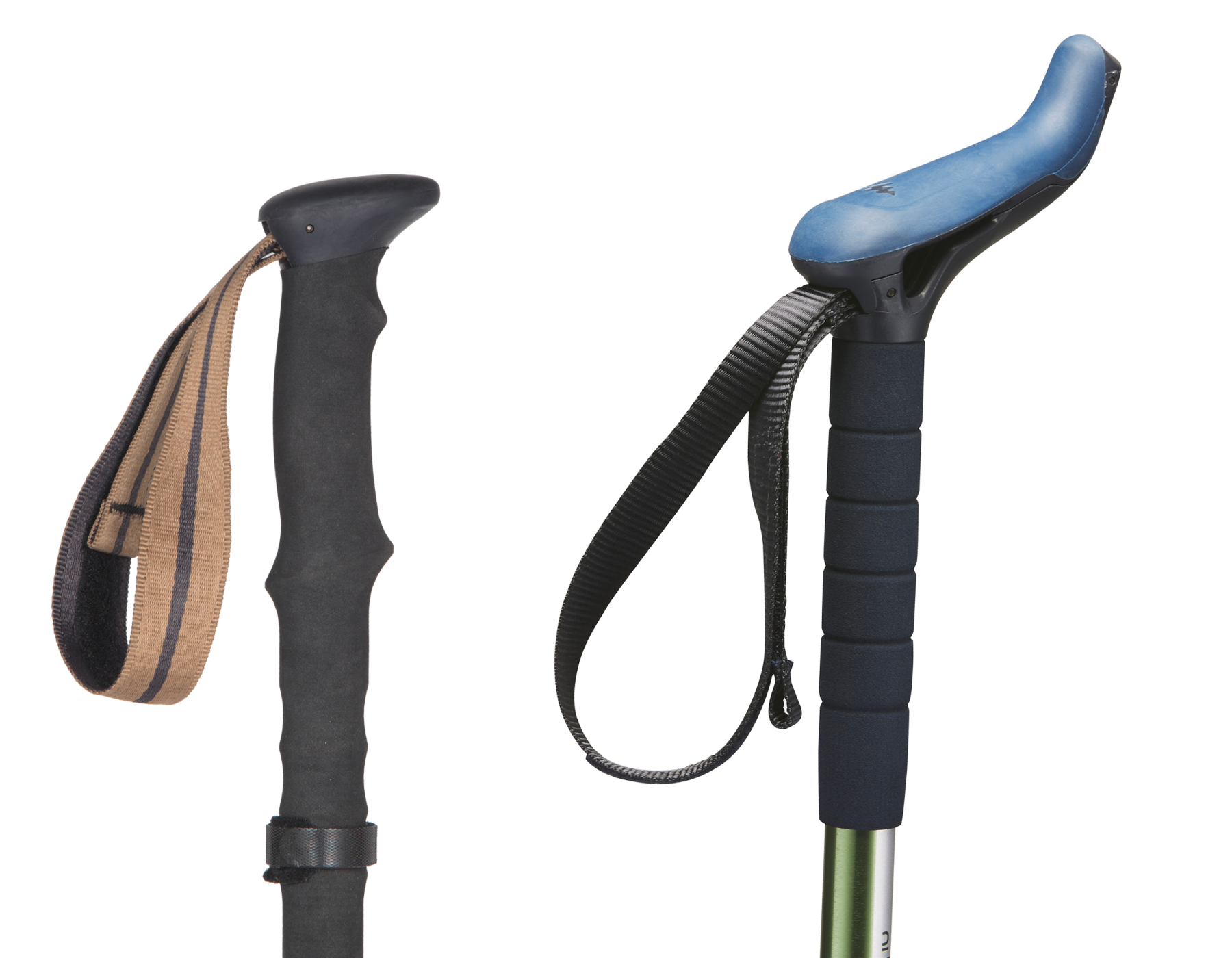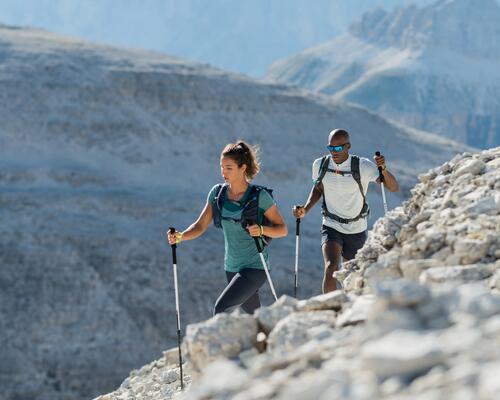Adjustment system
This is a key consideration because you will be using it regularly, so you need to be comfortable with the way it works.
Beginners: if you want to make life easy, the simplest and most reliable system is the push-pin. All you have to do is slide the tube and the push button will fit in the hole corresponding to the height that suits you.
Intermediate: in recent years, we have equipped our poles with external blockers (or levers). This is a more precise way to adjust the length since you’re not constrained by the spacing of the push-pin holes, yet remains very easy to use. Check that the lever screw is tight to prevent the pole from retracting under full load.
Finally, the screw systems are there to provide certain features such as shockproofing. But they can be more complicated to handle.
Additional info: The risk with adjustment systems is the pole collapsing in use. To avoid this, whatever system you choose, our models undergo compression lab tests. So they all meet the safety threshold we have set ourselves, which is the result of measurements taken in the field.



